Dibutyltin diacetate
Synonym(s):Diacetoxydibutylstannane, Diacetoxydibutyltin;Diacetoxydibutyltin;Dibutyltin diacetate
- CAS NO.:1067-33-0
- Empirical Formula: C12H24O4Sn
- Molecular Weight: 351.03
- MDL number: MFCD00008697
- EINECS: 213-928-8
- SAFETY DATA SHEET (SDS)
- Update Date: 2024-12-18 14:08:57
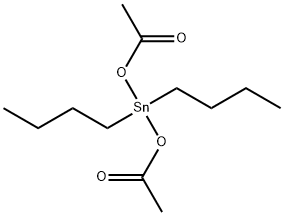
What is Dibutyltin diacetate?
Chemical properties
clear pale yellow to yellow liquid
The Uses of Dibutyltin diacetate
PU catalyst, RTV silicone rubber
The Uses of Dibutyltin diacetate
As as stabilizer in chlorinated organics, and as a catalyst for condensation reactions.Di-n-butyltin diacetate is used as a stabilizer for polyvinyl chloride. It acts as a catalyst for the preparation of silicone and urethane foams. Further, it is used as a curing agent for silicone elastomers. In addition to this, it is used as a precursor for thin-film tin(IV) oxide gas sensing materials by laser-assisted chemical vapor deposition.
What are the applications of Application
Dibutyltin diacetate is a catalyst for condensation reactions
General Description
Clear yellow liquid.
Air & Water Reactions
Forms white precipitate in water. Insoluble in water.
Reactivity Profile
Dibutyltin diacetate is stable under normal laboratory conditions. Dibutyltin diacetate may react with oxidizers. . Strongly reactive with many other groups. Incompatible with acids and bases. Organometallics are good reducing agents and therefore incompatible with oxidizing agents.
Fire Hazard
Dibutyltin diacetate is combustible.
Safety Profile
Poison by ingestion and intravenous routes. Experimental reproductive effects. Combustible when exposed to heat or flame; can react with oxidizing materials. To fight fire, use water, foam, CO2, dry chemical. When heated to decomposition it emits acrid smoke and irritating fumes. See also TIN COMPOUNDS.
Properties of Dibutyltin diacetate
| Melting point: | 7-10 °C(lit.) |
| Boiling point: | 142-145 °C10 mm Hg(lit.) |
| Density | 1.32 g/mL at 25 °C(lit.) |
| vapor density | 12 (vs air) |
| vapor pressure | 1.3 mm Hg ( 25 °C) |
| refractive index | n |
| Flash point: | >230 °F |
| storage temp. | Store below +30°C. |
| solubility | 0.006g/l |
| form | liquid |
| color | colorless |
| Specific Gravity | 1.32 |
| Water Solubility | insoluble |
| BRN | 4136035 |
| Exposure limits | ACGIH: TWA 0.1 mg/m3; STEL 0.2 mg/m3 (Skin) NIOSH: IDLH 25 mg/m3; TWA 0.1 mg/m3 |
| CAS DataBase Reference | 1067-33-0(CAS DataBase Reference) |
| NIST Chemistry Reference | Dibutyltin diacetate(1067-33-0) |
| EPA Substance Registry System | Dibutyltin diacetate (1067-33-0) |
Safety information for Dibutyltin diacetate
| Signal word | Danger |
| Pictogram(s) |
 Corrosion Corrosives GHS05  Exclamation Mark Irritant GHS07  Health Hazard GHS08  Environment GHS09 |
| GHS Hazard Statements |
H314:Skin corrosion/irritation H317:Sensitisation, Skin H341:Germ cell mutagenicity H360:Reproductive toxicity H370:Specific target organ toxicity, single exposure H372:Specific target organ toxicity, repeated exposure H410:Hazardous to the aquatic environment, long-term hazard |
| Precautionary Statement Codes |
P202:Do not handle until all safety precautions have been read and understood. P273:Avoid release to the environment. P280:Wear protective gloves/protective clothing/eye protection/face protection. P303+P361+P353:IF ON SKIN (or hair): Remove/Take off Immediately all contaminated clothing. Rinse SKIN with water/shower. P305+P351+P338:IF IN EYES: Rinse cautiously with water for several minutes. Remove contact lenses, if present and easy to do. Continuerinsing. |
Computed Descriptors for Dibutyltin diacetate
Dibutyltin diacetate manufacturer
S V Plastochem Pvt Ltd
ARRAKIS INDUSTRIES LLP
New Products
(S)-3-Aminobutanenitrile hydrochloride 4-Methylphenylacetic acid N-Boc-D-alaninol N-BOC-D/L-ALANINOL Tert-butyl bis(2-chloroethyl)carbamate N-octanoyl benzotriazole 3-Morpholino-1-(4-nitrophenyl)-5,6-dihydropyridin- 2(1H)-one Furan-2,5-Dicarboxylic Acid S-2-CHLORO PROPIONIC ACID ETHYL ISOCYANOACETATE 2-Bromo-1,3-Bis(Dimethylamino)Trimethinium Hexafluorophosphate 4-IODO BENZOIC ACID 3-NITRO-2-METHYL ANILINE 1-(2,4-DICHLOROPHENYL) ETHANAMINE (2-Hydroxyphenyl)acetonitrile 4-Bromopyrazole 5,6-Dimethoxyindanone 2-(Cyanocyclohexyl)acetic acid 4-methoxy-3,5-dinitropyridine 1-(4-(aminomethyl)benzyl)urea hydrochloride 2-aminopropyl benzoate hydrochloride diethyl 2-(2-((tertbutoxycarbonyl)amino) ethyl)malonate tert-butyl 4- (ureidomethyl)benzylcarbamate Ethyl-2-chloro((4-methoxyphenyl)hydrazono)acetateRelated products of tetrahydrofuran

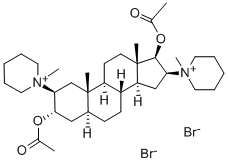

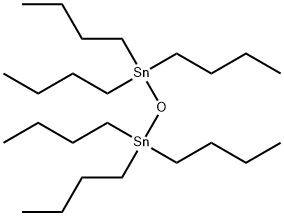


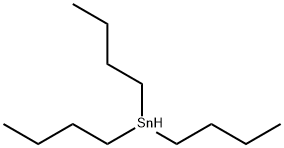
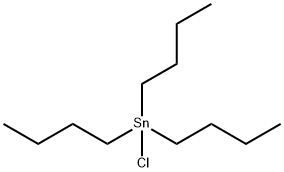
You may like
-
 Di-n-butyltin diacetate CAS 1067-33-0View Details
Di-n-butyltin diacetate CAS 1067-33-0View Details
1067-33-0 -
 Di-n-butyltin diacetate CAS 1067-33-0View Details
Di-n-butyltin diacetate CAS 1067-33-0View Details
1067-33-0 -
 Di-n-butyltin diacetate CAS 1067-33-0View Details
Di-n-butyltin diacetate CAS 1067-33-0View Details
1067-33-0 -
 Dibutyltin diacetate 95% CAS 1067-33-0View Details
Dibutyltin diacetate 95% CAS 1067-33-0View Details
1067-33-0 -
 Dibutyltin diacetate, 95% CAS 1067-33-0View Details
Dibutyltin diacetate, 95% CAS 1067-33-0View Details
1067-33-0 -
 Dibutyltin Diacetate CAS 1067-33-0View Details
Dibutyltin Diacetate CAS 1067-33-0View Details
1067-33-0 -
 Dibutyltin diacetate CAS 1067-33-0View Details
Dibutyltin diacetate CAS 1067-33-0View Details
1067-33-0 -
 Dibutyltin diacetate CAS 1067-33-0View Details
Dibutyltin diacetate CAS 1067-33-0View Details
1067-33-0